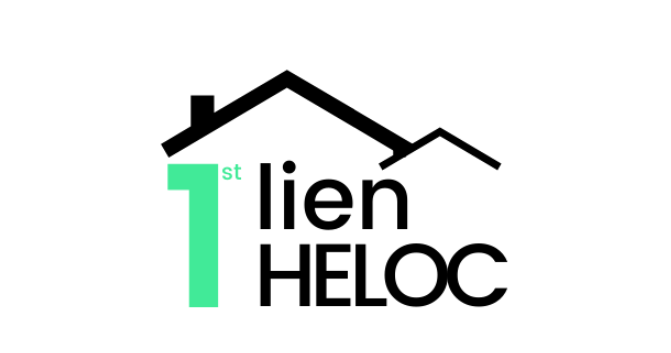
High-income earners often face unique financial challenges.
While they have the advantage of greater disposable income, they may also face increased lifestyle inflation, complex investment opportunities, and higher tax burdens.
Budgeting effectively at a higher income level requires a more strategic approach to manage spending, maximize savings, and optimize investment potential.
In this article, we’ll explore the challenges high-income earners face and provide tips for setting up a budget that promotes financial growth and stability.
Unique Challenges for High-Income Earners

High-income earners have financial situations that differ significantly from those earning median or lower incomes. Here are some of the most common challenges they face:
1. Lifestyle Inflation
As income increases, it’s easy to fall into the trap of lifestyle inflation, where expenses grow in proportion to earnings. This can prevent even high earners from accumulating substantial wealth over time.
2. Tax Obligations
With higher income comes higher tax responsibilities. High-income earners often fall into the highest tax brackets and need strategies to manage tax liabilities effectively.
3. Complex Investment Options
High-income earners may have access to more investment opportunities, such as private equity or real estate syndications, that require more sophisticated financial knowledge to navigate.
4. Overlooking Long-Term Planning
The comfort of a high salary can sometimes lead to complacency, causing individuals to delay important long-term financial planning, such as retirement savings or estate planning.
Key Tips for Budgeting and Growing Wealth as a High-Income Earner

Budgeting for wealth accumulation and financial stability involves more than simply tracking expenses. Here are some strategic tips for high-income earners to maximize their financial potential:
1. Embrace a Savings-First Approach
High-income earners can benefit greatly from prioritizing savings before expenses. Start each month by allocating a significant portion of your income to savings and investments. The rule of thumb for high-income earners is to aim to save and invest at least 20-30% of your gross income.
- Emergency Fund: Ensure you have a robust emergency fund covering 6-12 months of living expenses.
- Retirement Savings: Maximize contributions to tax-advantaged accounts like 401(k)s or IRAs, and consider backdoor Roth IRA contributions if direct contributions are not allowed due to income limits.
2. Automate Investments
Automation ensures consistency in saving and investing, which can help high-income earners grow wealth steadily without being tempted to overspend. Set up automatic transfers to investment accounts, such as:
- Brokerage Accounts: Automate monthly contributions to stocks, ETFs, or mutual funds.
- Retirement Accounts: Schedule automatic contributions to your 401(k), IRA, or SEP IRA if you’re self-employed.
3. Diversify Your Investment Portfolio
High-income earners have more opportunities to diversify their investments. Consider adding a variety of asset classes to your portfolio:
- Index Funds and ETFs: Continue to invest in broad market funds like the S&P 500 for consistent, long-term growth.
- Real Estate: Invest in rental properties or real estate syndications to diversify your income streams.
- Alternative Investments: Explore private equity, hedge funds, or venture capital as potential high-reward investment options. However, ensure these align with your risk tolerance and financial goals.
4. Implement Tax-Efficient Strategies
Taxes can significantly erode wealth if not managed properly. Here are some strategies to minimize tax liabilities:
- Maximize Tax-Advantaged Accounts: Contribute the maximum allowable amounts to 401(k)s, IRAs, and Health Savings Accounts (HSAs).
- Invest in Municipal Bonds: These bonds often provide tax-free interest income at the federal level and sometimes at the state level.
- Charitable Donations: Use charitable contributions to reduce your taxable income while supporting causes you care about.
- Consult with a Tax Professional: Work with a tax advisor to explore additional strategies, such as tax-loss harvesting or contributing to a donor-advised fund.
5. Control Lifestyle Creep
To avoid lifestyle inflation, practice mindful spending:
- Set Spending Limits: Even with a high income, setting monthly spending caps on discretionary expenses can help curb impulse purchases.
- Value-Based Budgeting: Align your spending with your core values and financial priorities. This might mean investing more in experiences and long-term assets rather than luxury items that don’t hold value.
- Budget Percentages: Consider using the 70-20-10 rule or modifying it (e.g., 50-30-20) to fit your goals. This structure helps you allocate a significant percentage of your income toward investments and savings.
6. Review and Adjust Regularly
A high-income earner’s budget should not be static. Regularly review and adjust your budget to reflect changes in your financial situation, such as salary increases, bonuses, or new investment opportunities.
- Quarterly Reviews: Reassess your budget every quarter to make sure it aligns with your goals.
- Rebalance Investments: Ensure that your investment portfolio is diversified and rebalanced regularly to maintain your desired risk level.
Long-Term Planning Tips for High-Income Earners

High-income earners should also focus on long-term strategies that go beyond monthly budgeting:
1. Estate Planning
Create an estate plan that includes a will, trust, and power of attorney to ensure that your wealth is managed and distributed according to your wishes. Estate planning can also offer tax benefits for your heirs.
2. Retirement Beyond the Basics
Consider retirement accounts beyond the traditional 401(k) and IRA. High-income earners may benefit from:
- Roth Conversions: Even if you don’t qualify for a direct Roth IRA contribution, a backdoor Roth IRA conversion can provide tax-free growth and withdrawals.
- Mega Backdoor Roth IRA: If your employer allows after-tax contributions to your 401(k), this strategy can significantly boost your retirement savings.
3. Set Up a Financial Safety Net
A financial safety net for high-income earners should include:
- Umbrella Insurance: This provides an additional layer of liability coverage, protecting your assets in case of significant claims.
- Income Protection: Consider disability insurance to replace a portion of your income if you’re unable to work due to illness or injury.
Mastering Budgeting for High-Income Earners
Setting up a budget as a high-income earner requires more than just tracking expenses—it’s about strategic allocation, mindful spending, and smart investing.
By prioritizing savings, automating investments, diversifying your portfolio, and employing tax-efficient strategies, you can maximize your income and grow your wealth over the long term.
Regularly reviewing and adjusting your budget ensures that your financial strategy stays aligned with your evolving goals and circumstances.
Ready to Maximize Your Investment Potential?

A First Lien HELOC can be a powerful tool for accessing home equity to invest in additional wealth-building opportunities.
Try our First Lien HELOC calculator today to discover how much equity you can unlock and take your financial strategy to the next level.

